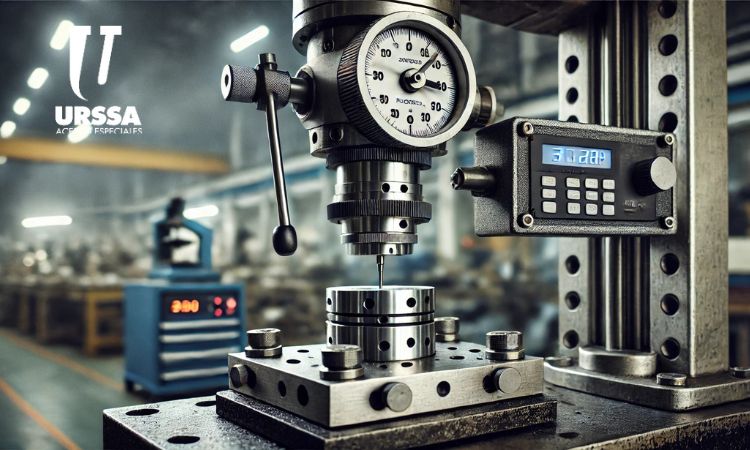
Steel surface hardness
A very common objective within the metal industry is to modify the surface hardness of steel (see definition of steel hardness) without modifying the internal resilience. To modify the surface hardness of the steel, heat treatments and thermochemical treatments are used.
Heat treatments
The objective of heat treatments is to modify the mechanical properties very significantly such as the hardness, toughness and mechanical resistance of the steel. In these processes, no contribution of chemical elements is added to the material.
Thermal treatments consist of heating the steel to be treated to a temperature lower than the melting temperature and keeping it there for a time to later cool the material at different speeds, depending on the type of treatment that is to be carried out. The achievement of different cooling speeds is achieved with techniques such as: bath in water, in oil, with stirrers or by leaving the steel to cool to room temperature.
There are different types of heat treatments: quenching, tempering, annealed and normalized, with them it is possible to improve the tensile strength, reduce the acrimony, raise the breaking stress, and eliminate internal stresses.
Thermochemical treatments
Thermochemical treatments are treatments whose objective is to produce changes in the structure of the steel and also to produce changes in the chemical composition of the surface layer, based on adding different chemical products to a certain depth.
These treatments require the use of controlled heating and cooling in special atmospheres. Among the most common objectives of these treatments are to increase the surface hardness of the parts, leaving the core softer and tougher, reduce friction, increasing lubricating power, increase resistance to wear, increase resistance to fatigue or increase resistance to corrosion.
There are different types of thermochemical treatments. The most common are: Cementation, nitriding, cyanidation, sulfinization.
